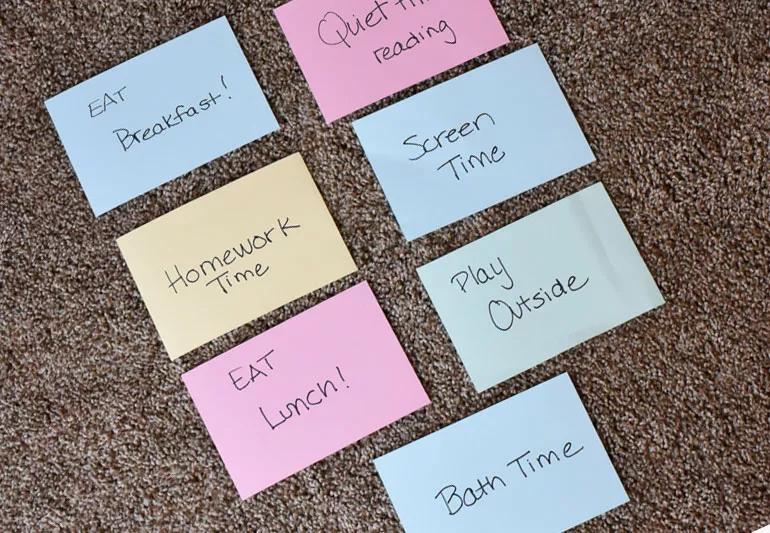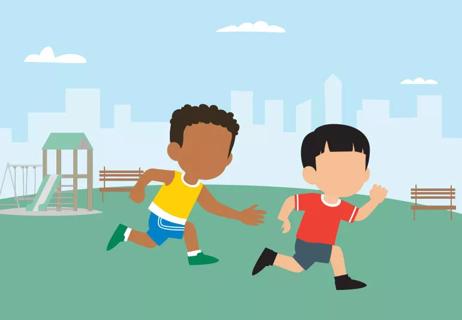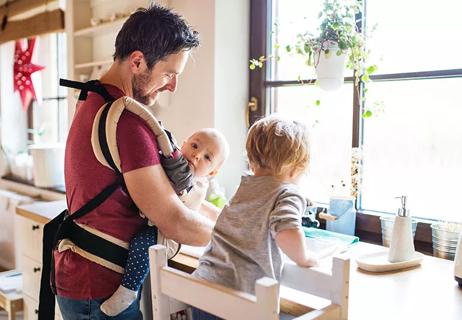Shake things up while helping them develop vital skills

You’ve been spending a lot more time with your kids. You’ve also gone from being a parent to being a teacher, counselor, cafeteria worker and even their one and only playdate. It hasn’t been easy, but you’re doing your best to keep everyone happy during a challenging time.
Advertisement
Cleveland Clinic is a non-profit academic medical center. Advertising on our site helps support our mission. We do not endorse non-Cleveland Clinic products or services. Policy
But no matter how hard you’ve tried, the “I’m bored” chorus has probably greeted you quite often during the past few months — and you’ll probably hear it again in 3…2…
Don’t worry and don’t lose your cool. If you’re all tapped out of ideas for kid-friendly fun, we have you covered. Just keep reading to discover a few educational and fun ways from Cleveland Clinic Children’s Therapy Services to keep your kids amazed and entertained while they’re stuck at home.
A good way to burn off some of that extra energy is to get the kids up and moving. Here are two cool activities to keep them busy.
Cosmic bowling is out of the question right now. No problem! You can create a fun bowling alley experience at home. Make some bowling alley favorites like popcorn, hot dogs or even pizza. Then, set up a bowling lane for your child in the backyard.
Make bowling pins by filling water bottles or two-liter bottles with colored water. Your child can use a kickball or basketball to knock the pins down. You can even show them how to keep score if they don’t know how to already.
The good thing about this activity is that it can be a twofer for a child’s motor skills. If bowling gets boring, set the pins up like a carnival game and let your child try to knock them down with bean bags or smaller balls. You can even give out small prizes or reward your child with tasks they enjoy to keep them engaged.
Advertisement
Can’t go to the zoo? Bring the zoo to your child. Write the names of different animals or draw pictures of them on index cards. Put them in a hat or bowl and take turns picking cards. Then, instruct your child to walk like the animal on the card they selected and try to guess what they are. For a challenging twist, you can let your child come up with their own animals or have them do their animal walk backward.
If your child needs help getting started with this activity, demonstrate the walk first. Then, have your child do it with you so they can understand how it all works.
You can help your child build language and literacy skills through play. Here are two enjoyable activities that they will love.
Make a list of things for your child to spot at the park or in the backyard. Put the list on a clipboard and let your child mark off each item after they see it. You can even have your child collect some of the items on the list for an in-person or virtual show and tell with family or friends.
Need something to do with those old books and periodicals? Have your child look through them to find people doing actions. Ask questions like, “Who is jumping?” or “Who is wearing glasses?” to practice pronouns.
To practice sounds, have your child identify pictures of items that start with particular sounds. Cut them out and glue them on paper to make a collage or a booklet so they can practice later. For example, you might cut out pictures of sand, soap, sandwiches or socks to practice the “S” sound.
Not everything has to be super high energy. Here’s a creative activity that’s on the low-key side.
Have your child trace different items using shadows from the sun. You can use a simple item like a toy or something more challenging like a plant. Place the item on a large piece of paper and have them trace the shadow of the object. Your child can even color or paint the details of the item that they trace. If this is too advanced, let your child create sidewalk art or draw on the windows with window markers.
While things are a little chaotic right now, kids truly thrive when there’s a schedule in place. You don’t need to plan an activity for every second of the day, but by creating a schedule, pediatric psychologist Emily Mudd, PhD, says that you can help create some normalcy for your child.
“Kids thrive on structure and predictability. Children are accustomed to a scheduled day — at school, summer camp, home — it’s important to maintain a sense of normalcy. What helps children feel safe is knowing what is going to come next. The number one thing that we can do to add some normalcy to their lives this summer, is to continue to have some sort of schedule to provide our children with a sense of predictability and security.”
If a schedule feels like too much for your child and family, try to find small ways to build boundaries and add structure to the day.
Advertisement
Here are some helpful tips for doing so from Cleveland Clinic Children’s Therapy Services.
It’s easy for parents to lose themselves as they’re trying to keep their children happy and juggle other responsibilities. But as Dr. Mudd explains, it’s important to recharge and take breaks when needed.
“Parents need to listen to and address their own needs. It’s important to take a pause, whether it’s after a child is misbehaving or if you’re just exhausted after spending the entire day working and providing childcare. This could be 10 seconds, two minutes or longer — whatever you feel is needed. Take a deep breath, listen to a song you like or take a shower. Parents are juggling a lot right now — take the time to reconnect with yourself and your needs. This can be hard since there are a lot of demands on parents right now — more than ever. You’re the chef, teacher, cleaning crew, playmate, and more — it’s not realistic to maintain all of these roles without taking time to address your own needs.”
Dr. Mudd suggests getting others involved with entertaining your child whether it be a virtual playdate with friends or a FaceTime dinner date with grandma. These activities can allow your child to connect with others and give you a little time to recover from the demands this new normal.
Advertisement
Learn more about our editorial process.
Advertisement

Cooties aren’t real, but the lessons they teach us about infectious disease are

Chores can instill important lessons in adulting and encourage healthy childhood development

Bleeding is a risk and warrants taking care, but the reward of this lifesaving medication is great

Severe and debilitating headaches can affect the quality of your child’s life

With repeat injections over time, you may be able to slow the development of new wrinkles

Type 2 diabetes isn’t inevitable with these dietary changes

Applying a hot or cold compress can help with pain